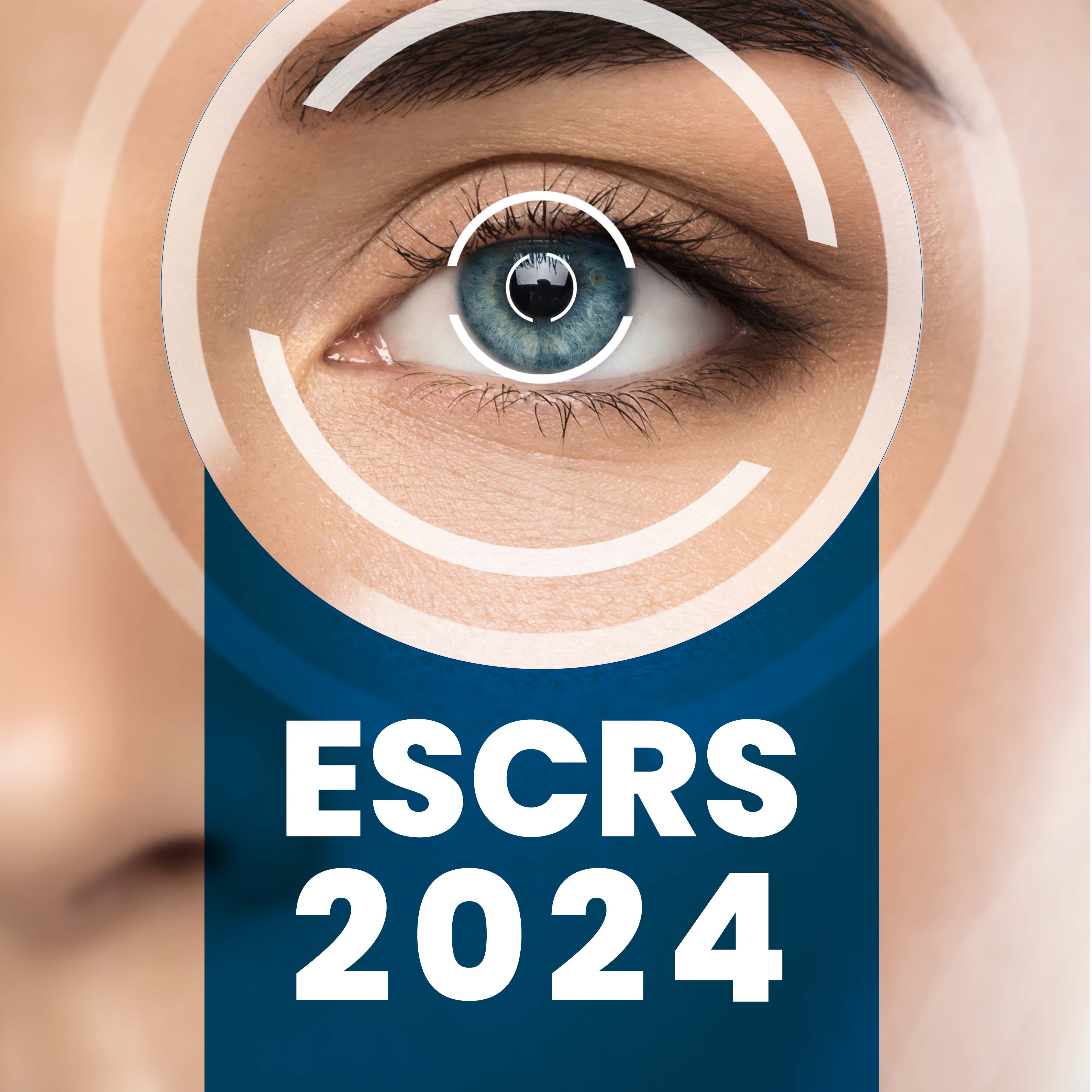ESCRS 2025: Ocular Surface Disease – Poster Presentations
Impact of Excessive Virtual Reality Headset Use on Internal Temperature, Humidity, and Dry Eye Syndrome: A Continuous Monitoring Study
Presenter: Chang Won Park
The study monitored real-time temperature and humidity inside VR headsets in 70 healthy university student participants (no dry eye symptoms or ocular surgery history) to assess dry eye symptoms. After adapting to a lab at 27°C and 55% humidity for 20 minutes, participants watched a 50-minute video using the Oculus Quest 2 VR headset.
Temperature and humidity inside the headset were recorded every 2.5 seconds. Humidity peaked at 69.87 ± 6.23% after 2 minutes 50 seconds, then gradually decreased with no significant difference compared to the initial value or after 25 minutes (p>0.05); humidity remained within the recommended 30–60% range. Temperature inside the headset steadily rose, and the heat index increased, with no statistically significant change after 40 minutes.
Objective dry eye tests (TBUT, Schirmer) and dry eye indicators showed no significant changes before and after VR use, while subjective dry eye symptoms measured by OSDI questionnaire worsened. These findings suggest no significant impact of short-term VR-induced temperature and humidity changes on objective dry eye measures
Tear Film and Ocular Surface Assessment in Pediatrics
Presenter: Alessandra Curci
A cross-sectional study at University Eye Clinic of San Giuseppe Hospital, Milan, evaluated feasibility and outcomes of tear film and ocular surface examinations in 150 pediatric patients (300 eyes, age 1–17) and 40 young adults (80 eyes, age 20–40). Of the children, 64 (43%) reported symptoms of pediatric dry eye disease (PeDED).
Feasibility of different diagnostic tests varied by type and age: tear film osmolarity (98%), non-invasive break-up time (NIBUT) (67%), fluorescein break-up time (FBUT) (38%), and ocular surface staining (35%) (P<0.01). Schirmer was feasible in 55% of infants and 32% of toddlers (P<0.05). Symptomatic children had significantly higher tear osmolarity (297.79±10.94 vs 287.87±54.46), lower NIBUT (7.07±9.11 vs 9.05±8.21), greater conjunctival redness (0 [0–1] vs 1 [0–1]), and lower Schirmer results (15.65±6.55 vs 18.66±6.56) (P<0.05).
The study demonstrates standard assessments are more challenging in younger children and recommends age-adapted diagnostic strategies for PeDED.
Particularity of Dry Eye Syndrome During Sjogren's Syndrome: A Monocentric Study
Presenter: Amira Mabrouk
A cross-sectional study at FSI La Marsa hospital included 100 dry eye syndrome (DES) patients (March–June 2024): Group 1 (with Sjögren’s syndrome, SS), Group 2 (without SS). Moderate DES per OSDI was reported in 96%, severe in 84%. Symptom-sign discordance was significant (p<0.001).
Meibomian gland dysfunction occurred in 59.2%, anterior blepharitis in 12.2% (more in controls, p<0.001), conjunctival hyperemia in 87.7%, LIPCOF in 67.3%, and severely impaired BUT in 44.9%. Pathological Schirmer was seen in 93.9% (lower in SS, p<0.001); 40% had severe deficiency. Superficial keratopathy was present in 91.8% (mean Oxford 1.65 ± 1.09), and 42% had severe biomicroscopic signs. DES in SS featured more pronounced tear deficit, though overall severity was comparable between groups.
Impact of Long-Term Eye Makeup use on Meibomian Gland Function
Presenter: Jin-Yu Chang
A prospective cohort study enrolled 40 females over 20 years old to evaluate the effects of prolonged eye makeup on meibomian gland function. The exposure group (20 long-term users; mean age 35.95 ± 6.75 years; makeup use 58.35 ± 21.46 hours/week for 14.30 ± 6.52 years) was compared to 20 controls (mean age 33.50 ± 9.53 years).
The exposure group showed significantly reduced tear film breakup time (p<0.01), Schirmer I test values (p=0.02), meibomian gland quality (p=0.03), and lower eyelid gland area (p=0.04) versus controls. Anterior displacement of the mucocutaneous junction was more frequent in the exposure group (p<0.01). No significant differences were found in OSDI scores, corneal staining, lipid layer thickness, upper lid gland area, gland expressibility, meibum plugging, or telangiectasia.
Prolonged eye makeup use may impair lower eyelid meibomian gland function, leading to tear film instability and ocular surface risk.
The Role of Lid Hygiene and its Effect on Ocular Surface Inflammatory Biomarkers
Presenter: Deepthi R H
A prospective study of 20 subjects without active ocular symptoms evaluated the effect of lid hygiene on inflammatory biomarkers and ocular surface health. The right eye underwent lid scrubbing twice daily for seven days, while the left eye was untreated.
After treatment, lipid layer thickness increased from 15 nm to 50 nm, and mean inflammatory biomarker levels decreased (MMP-9: 4.3 to 2.3 pg/mL; IL-6: 103 to 50.2 pg/mL; IL-1β: 8.42 to 4.68 pg/mL; VEGF-A: 7577 to 5834 pg/mL; IL-17A: 23.5 to 15 pg/mL). Non-invasive tear breakup time (NIBUT) improved significantly from 3.4 to 18.9 seconds (p<0.05).
Lid hygiene effectively reduces inflammation and improves tear film quality, supporting its use in periocular care before and after ocular surgery.
Netarsudil Induced Corneal Honeycombing in Childhood Glaucomas
Presenter: Somya Kumari
A prospective study at a tertiary care hospital evaluated netarsudil 0.02% once nightly for at least 14 days in one eye of pediatric glaucoma patients (mean age 6.1 ± 4.8 years; range 6 months–14 years) with uncontrolled intraocular pressure (IOP). Baseline mean IOP of 31.9 ± 8.1 mmHg significantly decreased to 27.6 ± 6.2 mmHg after treatment (13.8% reduction, p<0.001), with an average IOP reduction of 4.2 mmHg (range 3.5–6).
Conjunctival hyperemia occurred in 8 children (50%), while 9 children (56.25%) developed transient corneal epithelial honeycombing, confirmed by anterior segment optical coherence tomography, leading to decreased visual acuity. The honeycombing resolved within 1 to 3 weeks after stopping netarsudil.
These findings reveal a high incidence of reversible corneal epithelial honeycombing in pediatric glaucoma patients treated with netarsudil, warranting caution when prescribing this drug in children.
Corneal Toxicities Related with Antibody-Drug Conjugates in Gynecologic Cancer
Presenter: Tamara Shukair Harb
A retrospective study in a Madrid hospital evaluated corneal toxicity in 15 patients with advanced gynecologic cancer treated with antibody-drug conjugates (ADCs) over 30 months (2021–2024). All patients experienced bilateral blurred vision, ocular pain, foreign-body sensation, and photophobia. Slit-lamp exams showed fine corneal subepithelial opacities resembling microcyst-like epithelial keratopathy, initially affecting the corneal periphery and migrating centrally with a ring pattern, altering corneal curvature.
Visual acuity and corneal clarity recovered within 2–3 weeks with topical steroids and lubricants. Three patients developed vortex keratopathy-like changes. ADC dose modifications were required in some cases. These corneal complications, though generally transient, may persist during treatment, highlighting the need for multidisciplinary management to minimize treatment interruption and optimize outcomes.
Feasibility of a Smartphone-Based Imaging Modality for Corneal Pathologies (Sadeva)
Presenter: Christopher Reischl
A single-center study at Kepler University Clinic, Austria, compared image quality and diagnostic accuracy between a slit lamp and a smartphone adapter-based eye imaging tool in 100 patients with visible anterior eye segment pathologies. Corneal specialists correctly diagnosed 96.55% of cases using slit lamp images versus 82.76% with the smartphone adapter; this difference was not statistically significant (p=0.102).
Residents diagnosed 89.66% correctly with slit lamp images but only 62.07% with the smartphone adapter, a significant difference (p=0.033). Correct therapy decisions based solely on images were made in 72% of specialist cases and 62% of resident cases (p=1). Specialists maintained diagnostic accuracy even with lower image quality.
Smartphone adapters show comparable image quality to slit lamps for superficial corneal lesions like trauma or foreign bodies, but reduced accuracy for corneal dystrophies.
European Society of Cataract and Refractive Surgeons (ESCRS) Congress 2025, September 12-16, Denmark



